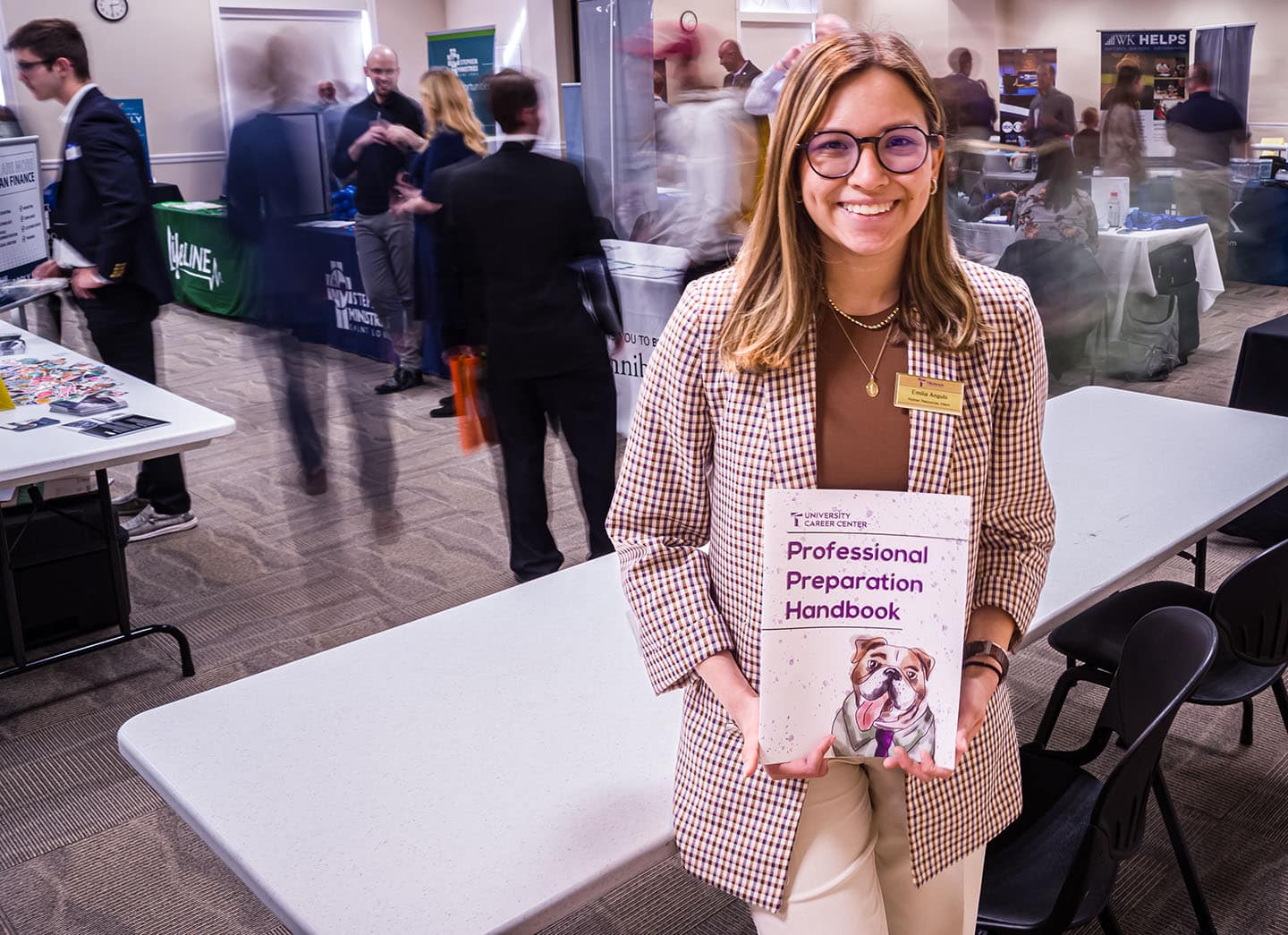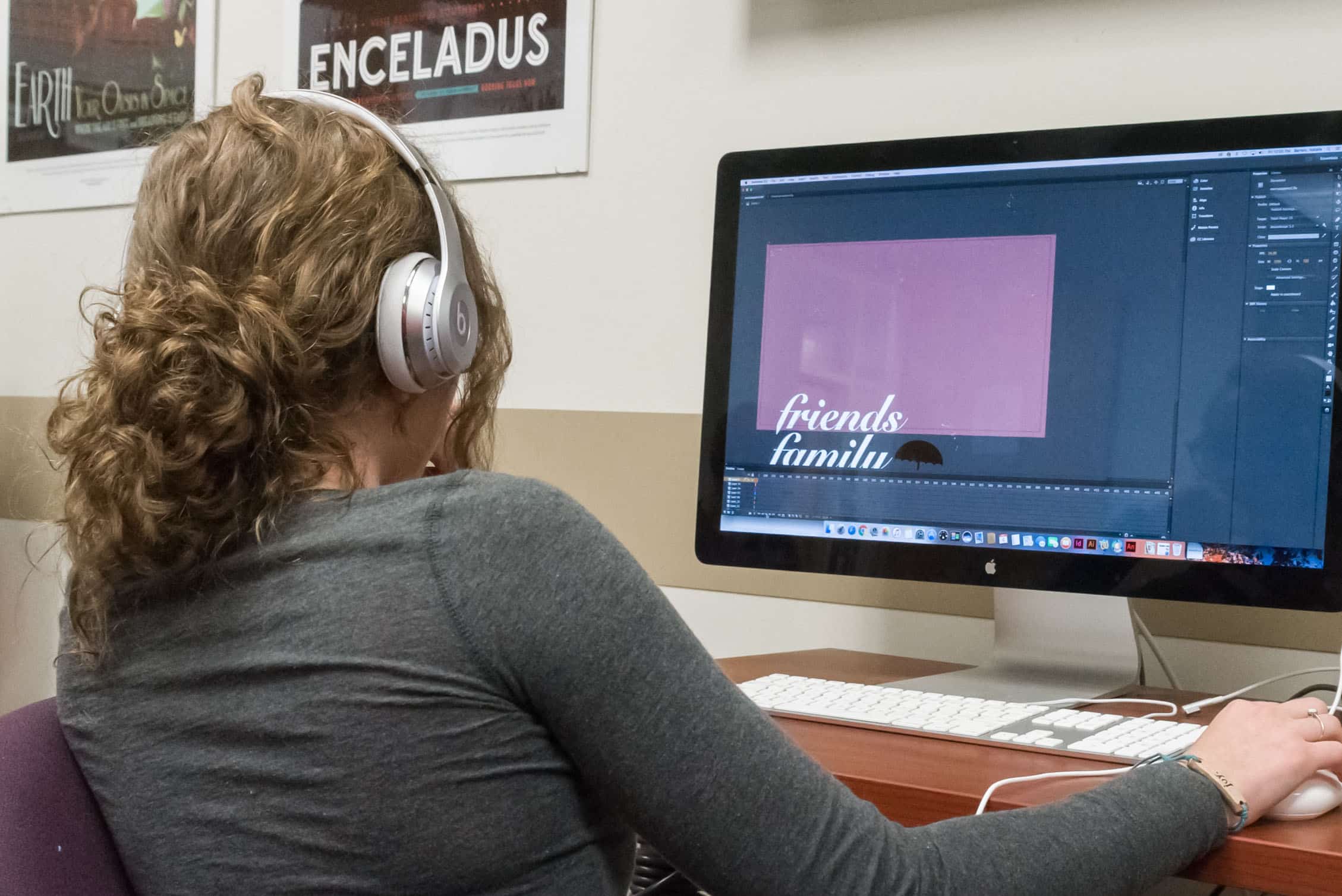The Online Bachelor of Fine Arts in Design program offers a pathway to launch or advance your career as a creative professional by taking classes from wherever it’s convenient for you. Through your coursework, you develop skills, concepts, and sensitivities to heighten your creative efforts. In addition to learning various techniques to generate compelling creative work, you also explore the history of art and advance your proficiency in critical thinking, problem-solving, and communication.
Whether you’re a working professional, a student transferring from another school, or a high school student exploring your options for college, this online program can help you become a highly valued visual communicator.
Interested in taking classes in person? Truman also offers an on-campus Bachelor of Fine Arts in Design program.
Career Paths
Graphic design offers a broad range of professional career choices in communications, advertising, marketing, television, and publishing (newspaper, book, magazine, online), as well as website design, corporate in-house design departments, entertainment industry, and self-employed designers.
Advertising involves working for multiple clients–from small mom-and-pops to large conglomerates–with numerous print and multimedia needs. One day you might help to design a print ad to go in the new issue of “Fishing” magazine while the next day you’re part of a team creating a billboard campaign for a used car dealer.
There are many different company sizes, as well as differences between the services or products they provide. Your projects could include brochures, in-store displays, and websites. Hallmark®, in Kansas City, has hired Truman graduates and other types of corporations range from department stores to product manufacturers just to name a few.
Graphic design firms are typically run and staffed by individuals with design backgrounds and business experience. You could enter a design firm as a print designer, a web designer, or someone who does both print and web.
Freelancing is a popular choice for pro-active go-getters. Being your own boss and the sense of freedom it brings can be empowering. You’ll want to get your name out, create self-promotional materials, arrange meetings with prospective clients, and advertise.
Cities like San Francisco, Los Angeles, Seattle, and Austin, Texas, are brimming with web design firms that compete for the coolest clients. Many cater to specific areas, like the entertainment industry (music, film, television), hip companies from the corporate sector (cars, fashion, furniture), or the art crowd (museums, architects, galleries). Some will be lucky enough to have clients from the full spectrum.
Non-profits run the gamut from charities to the Red Cross to the Nature Conservancy. Plenty of print work will come your way at a non-profit, and many are expanding into the web arena.
Publishing houses vary from small and specific (perhaps focusing on only one type of publication, Christian, for instance) to large and all-encompassing (think Prentice-Hall or any of the New York publishers).
Along that same line, you could have your choice of a casual environment or one that’s more corporate.
Almost all universities and colleges have on-campus design departments, which are great for those designers who never want to leave college behind. These departments tend to be relegated to divisions like publications (print) and technology services (web).
Teaching visual communications in community colleges, colleges, and universities is an option for an experienced designer. The terminal degree required for most colleges and universities is a Master of Fine Arts. Experienced professional designers with an M.F.A. are in great demand by these institutions.
Working for three to five years professionally in a corporate environment is beneficial before pursuing a master’s degree.
Resources

Career Center
As an online student, you have access to services offered by the University's Career Center. They can help you customize a path to help you achieve your career goals.

Resources for Online Students
Truman offers a full range of services and support for online students.








































